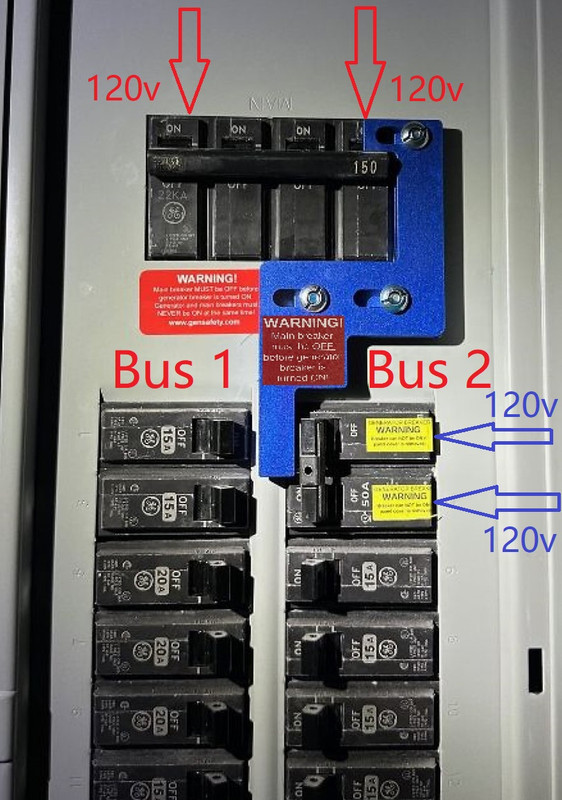Chatgpt
Connecting a generator with four wires (L1, L2, Neutral, and Ground) to this panel requires careful planning and adherence to electrical codes. Here's a general guide:
1. Install a Generator Interlock Kit
This panel already has an interlock kit (blue bracket), which prevents backfeeding to the grid.
Ensure your generator interlock is compatible and installed correctly.
2. Identify the Generator Wires
L1 (Hot) → Connects to one side of the main breaker (Bus 1).
L2 (Hot) → Connects to the other side of the main breaker (Bus 2).
Neutral (White) → Connects to the neutral bar in the panel.
Ground (Green or Bare Copper) → Connects to the ground bar in the panel.
3. Install a Generator Inlet Box
Mount a generator inlet box outside your home.
Use a proper cable (e.g., 10/4 or 8/4 depending on amperage) to run from the inlet box to the panel.
4. Add a Generator Breaker
Install a two-pole breaker (typically 30A or 50A, depending on your generator output) in the panel.
Connect the generator inlet wires (L1 and L2) to the breaker.
Connect Neutral to the neutral bus.
Connect Ground to the ground bus.
5. Operating the Generator
Turn off the main breaker before starting the generator.
Turn on the generator breaker after the generator is running.
Ensure only essential circuits are powered to avoid overloading.

Important:
Follow local electrical codes and consult a licensed electrician if unsure.
An improper generator connection can cause backfeeding, leading to electrical hazards.
Would you like specific recommendations for an inlet box or breaker size based on your generator’s output?









